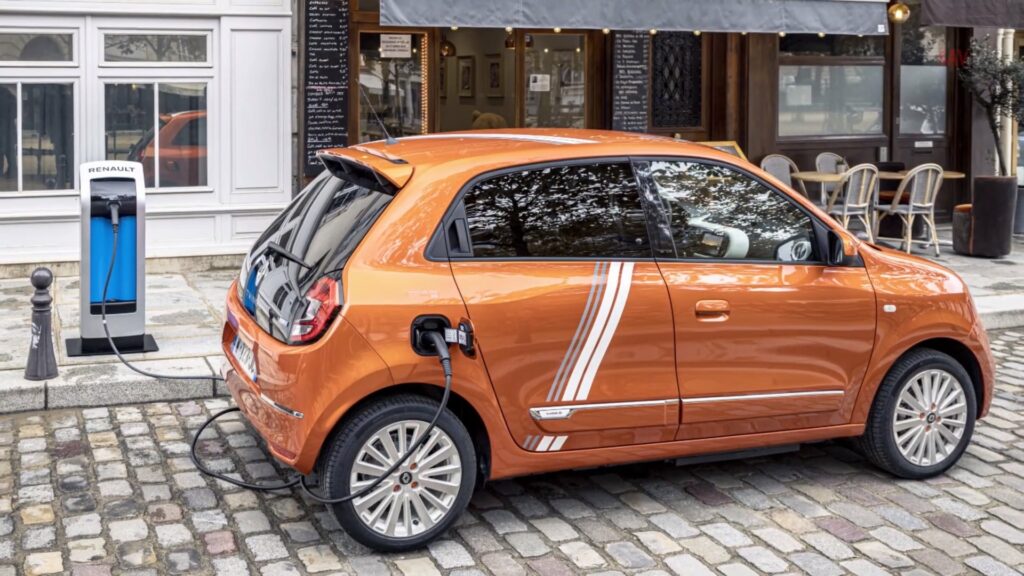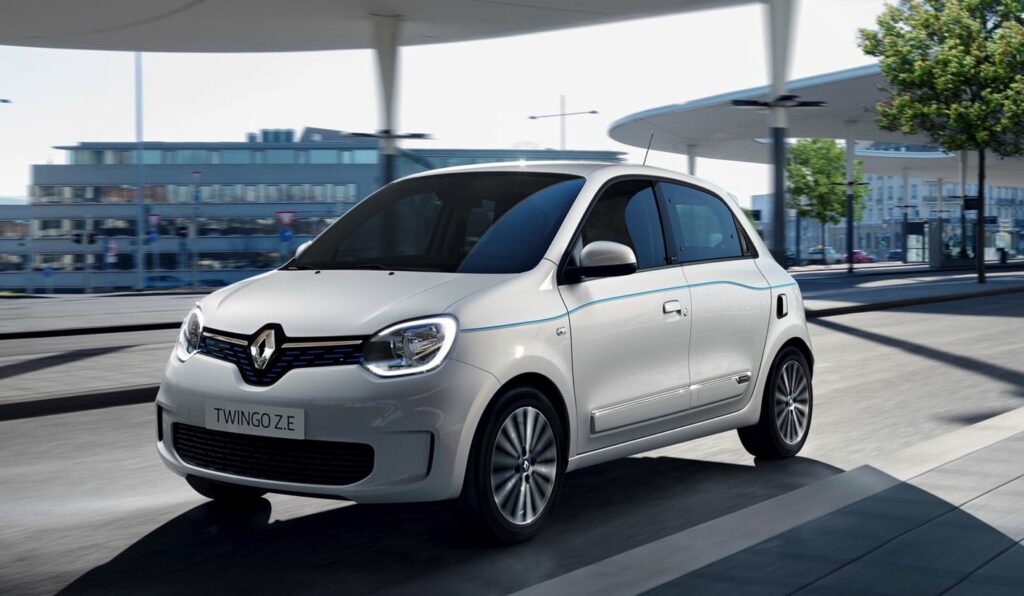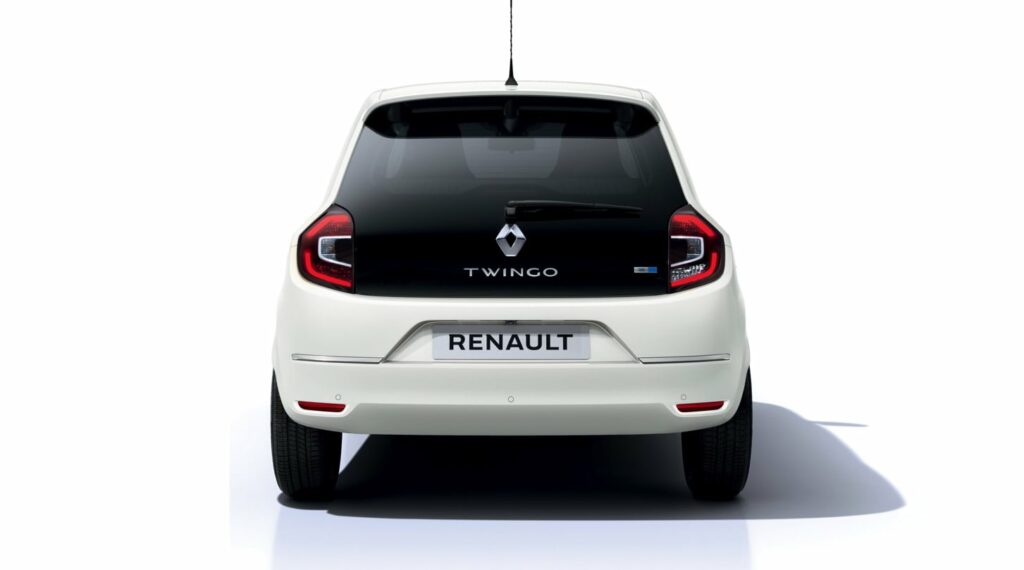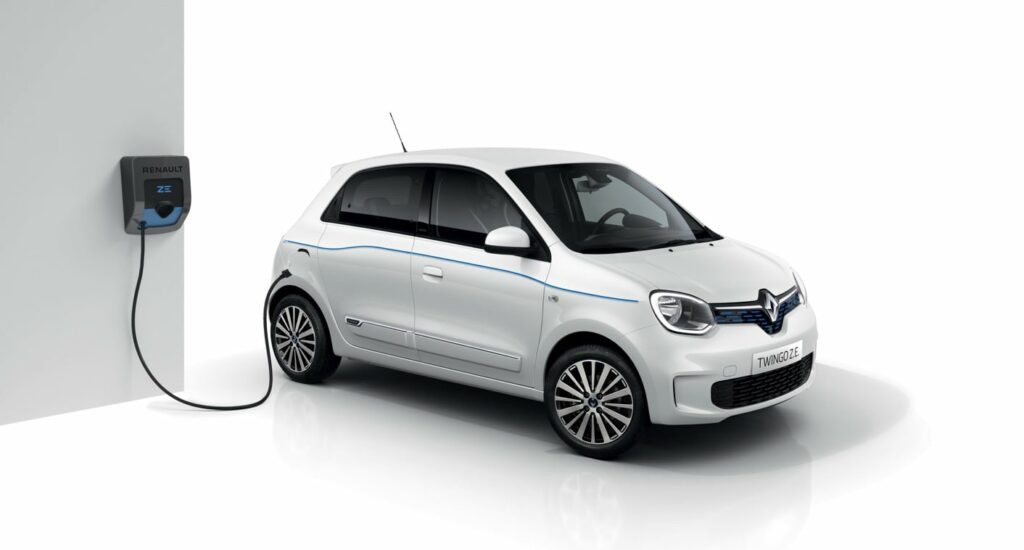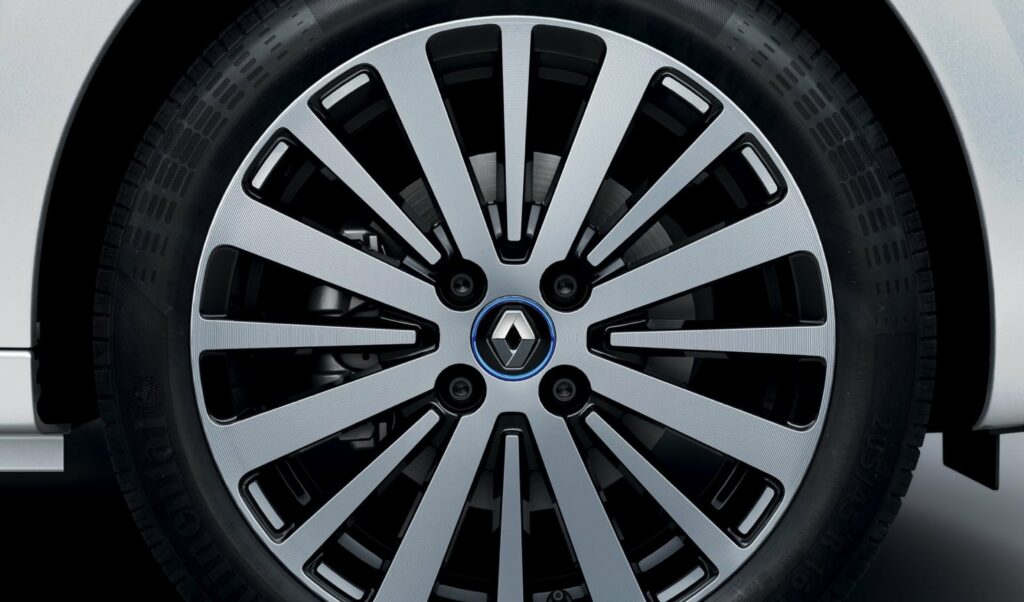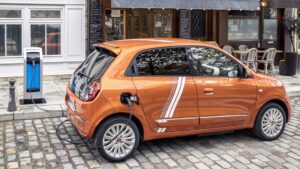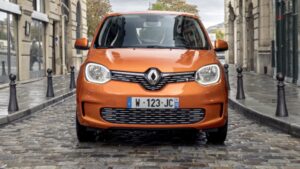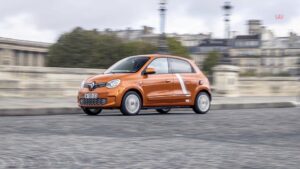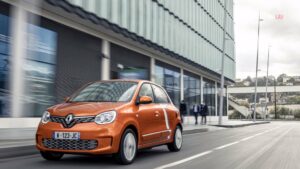Renault Twingo Electric
The Renault Twingo Electric is an all-electric version of the popular Twingo city car. It was launched in 2020 and is designed for city drivers who need a compact and practical electric vehicle.
The Twingo Electric is equipped with a 22 kWh battery pack that provides a range of up to 130 km (WLTP cycle) on a single charge. It is equipped with a 60.0 kW electric motor and 160 Nm of torque, which enables it to accelerate from 0 to 100 km/h in just 12.6 seconds.

The Twingo Electric is also equipped with a number of features designed to make city driving easier and more convenient, including a rearview camera, rear parking sensors, and an infotainment system with a touchscreen and smartphone integration.
As for charging, the Twingo Electric can be charged from a standard household outlet, a wall unit, or a public charging station. Using a 22kW wall unit, the Twingo Electric charges from 0 to 100 percent in just 1 hour and 45 minutes.

Overall, the Renault Twingo Electric is a practical and efficient electric vehicle that is ideal for city driving. Its compact size, long-range and handy features make it a great option for those looking to switch to electric vehicles without compromising on practicality.
| Performance | |
| Acceleration 0 – 100 km/h | 12.6 sec |
| Top Speed | 135 km/h |
| Electric Range | 130 km |
| Total Power | 60 kW (82 PS) |
| Total Torque | 160 Nm |
| Drive | Rear |
| Battery and Charging | |
| Battery Capacity | 23.0 kWh |
| Battery Useable | 21.3 kWh |
| Europe | |
| Charge Port | Type 2 |
| Port Location | Right Side – Rear |
| Charge Power | 22 kW AC |
| Charge Time (0->130 km) | 1h15m |
| Charge Speed | 110 km/h |
| Fastcharge Port | – |
| FC Port Location | – |
| Fastcharge Power (max) | – |
| Fastcharge Time | – |
| Fastcharge Speed | – |
| Energy Consumption | |
| EVDB Real Range | |
| Range | 130 km |
| Vehicle Consumption | 164 Wh/km |
| CO2 Emissions | 0 g/km |
| Vehicle Fuel Equivalent | 1.8 l/100km |
| WLTP Ratings | |
| Range | 190 km |
| Rated Consumption | 163 Wh/km |
| Vehicle Consumption | 112 Wh/km |
| CO2 Emissions | 0 g/km |
| Rated Fuel Equivalent | 1.8 l/100km |
| Vehicle Fuel Equivalent | 1.3 l/100km |
|
Rated = official figures as published by manufacturer. Rated consumption and fuel equivalency figures include charging losses.
|
|
|
Vehicle = calculated battery energy consumption used by the vehicle for propulsion and on-board systems.
|
|
| Real Energy Consumption Estimation between 104 – 237 Wh/km | |
| City – Cold Weather * | 158 Wh/km |
| Highway – Cold Weather * | 237 Wh/km |
| Combined – Cold Weather * | 194 Wh/km |
| City – Mild Weather * | 104 Wh/km |
| Highway – Mild Weather * | 178 Wh/km |
| Combined – Mild Weather * | 137 Wh/km |
| Energy use for each trip will vary considerably depending on the driver and the conditions. Therefore, we have provided a range of estimates which can be useful in developing an understanding of the potential benefits of this technology. | |
| Dimensions and Weight | |
| Length | 3615 mm |
| Width | 1646 mm |
| Width with mirrors | No Data |
| Height | 1541 mm |
| Wheelbase | 2492 mm |
| Weight Unladen (EU) | 1208 kg |
| Gross Vehicle Weight (GVWR) | 1518 kg |
| Max. Payload | 385 kg |
| Cargo Volume | 174 L |
| Cargo Volume Max | 980 L |
| Cargo Volume Frunk | No Data |
| Roof Load | 0 kg |
| Tow Hitch Possible | No Data |
| Towing Weight Unbraked | 0 kg |
| Towing Weight Braked | 0 kg |
| Vertical Load Max | No Data |
| Miscellaneous | |
| Seats | 4 people |
| Isofix | No Data |
| Turning Circle | 4.3 m |
| Platform | No Data |
| Car Body | Hatchback |
| Segment | A – Mini |
| Roof Rails | No |
| EV Dedicated Platform | No Data |
Home and Destination Charging (0 -> 100%)
A public charging station is required to use the highest possible charging rate. The EVSE/charging station’s charging capacity affects how long it takes to fully charge the battery. The table below shows all possible options for fully charging the Renault Twingo Electric.
In Europe, plugging an electric car into an outlet is often as easy as plugging it into a household outlet, but there are differences from country to country. The table below shows the different ways to charge the Renault Twingo Electric, but in some countries some chargers may not be available.
Type 2 ( IEC 62196)

| Charging Point | Max. Power | Power | Time | Rate |
| Wall Plug (2.3 kW) | 230V / 1x10A | 2.3 kW | 11 hours | 12 km/h |
| 1-phase 16A (3.7 kW) | 230V / 1x16A | 3.7 kW | 7 hours | 19 km/h |
| 1-phase 32A (7.4 kW) | 230V / 1x32A | 7.4 kW | 3h30m | 37 km/h |
| 3-phase 16A (11 kW) | 400V / 3x16A | 11 kW | 2h30m | 52 km/h |
| 3-phase 32A (22 kW) | 400V / 3x32A | 22 kW | 1h15m | 100 km/h |
| Brand | Renault |
| Model | Twingo Electric |
| Body Style | Hatchback |
| Car Engine | electric |
| Motor power | 60 |
| Maximum Torque, Nm | 160 |
| Battery Energy, kWh | 23.0 |
| Power reserve (NEDC/EPA/WLTP), km | - / - / 130 |
| Level Charging (230/400/DC), hours | - / 1.15 / - |
| Electrical Acceleration, 0-100 km/h (0-62.1 mph) in sec | 12.6 |
| Top Speed, km/h | 135 |



